|
The
Free Trade Hall - Radisson Edwardian Hotel
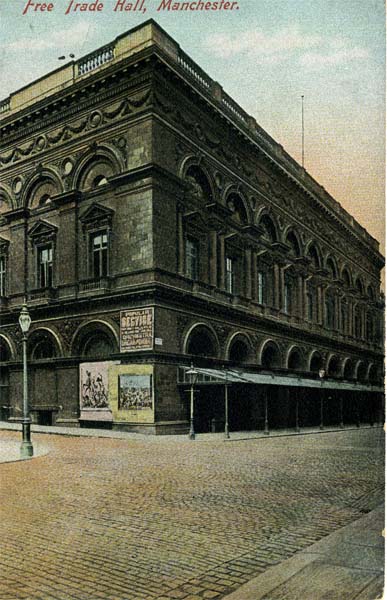 This is a building
that probably brings back lots of memories for
people who grew up in Manchester. I saw Leonard
Bernstein conducting the Hallé Orchestra there and
every year my school held its Speech Nights there.
In fact in first year, before they discovered that I
was the horrible noise in the back row, I sang in
the school choir on the stage at the Free Trade
Hall.
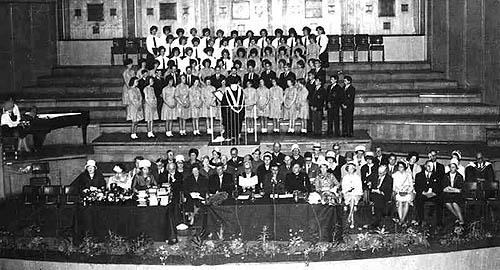 Somewhat more
momentous is the fact that it was on that same
stage that Bob Dylan shocked the world by
setting aside his acoustic guitar and going
electric! Long before that the ground on which
it stands was St. Peter's Field, the site of the
Peterloo Massacre.
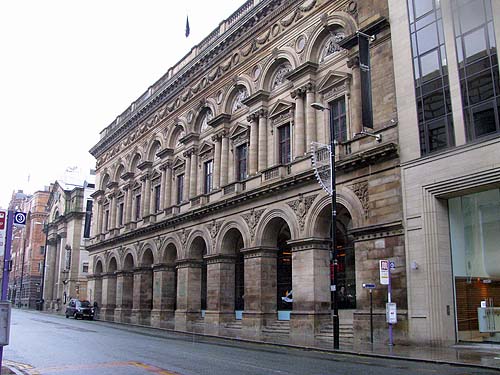 The Free
Trade Hall was built between 1853 and 1856
by Edward Walters. The mandate was to build
a hall suitable for "literary, religious,
musical and other purposes" and the name
derives from the prominent part played by
Manchester in the repeal of the Corn Laws
and the promotion of Free Trade. In 1969
Pevsner described Walters' design as
"perhaps the noblest monument in the
Cinquecento style in England."
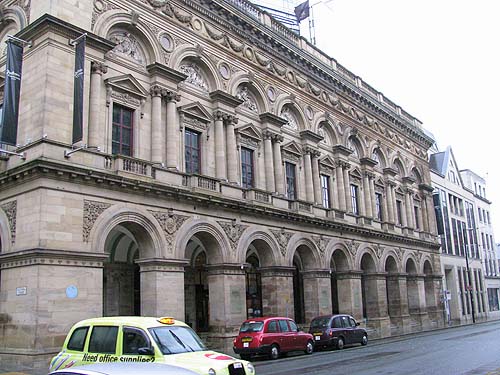 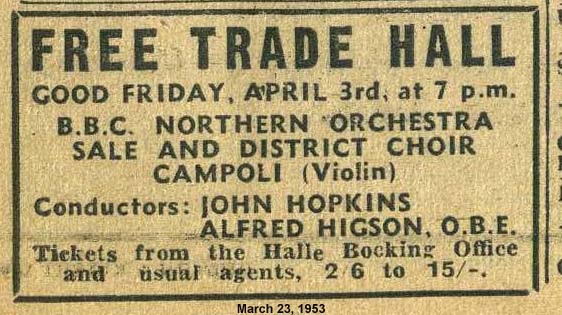 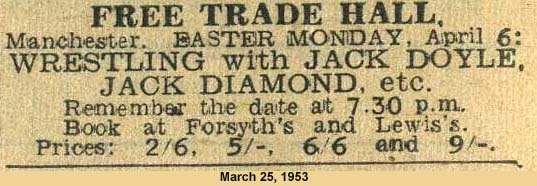 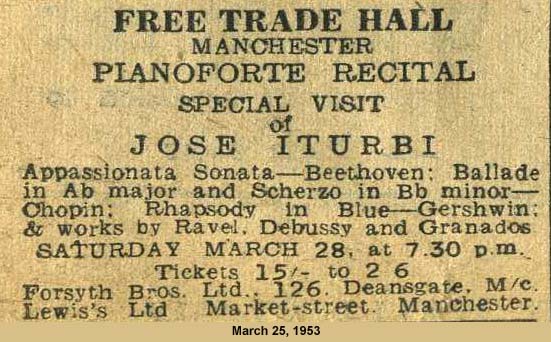 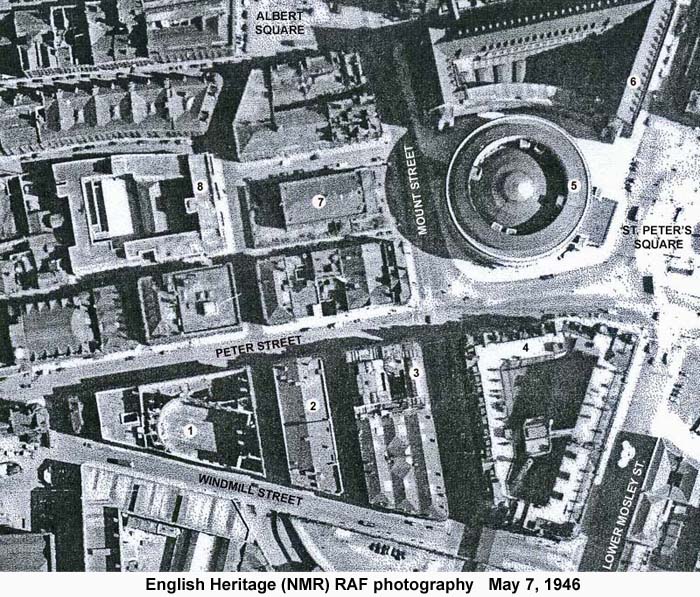
In the late
1940s and early 1950s, the interior was
rebuilt by Leonard Howitt, the City
architect. The hall became synonymous with
its major tenant the world famous Hallé
Orchestra until it moved to its new home,
the Bridgewater Hall in the mid 1990s.
Below you
see the back of the hall on Windmill Street.
Eight stone figures represented the variety
of activities that took place in the hall.
 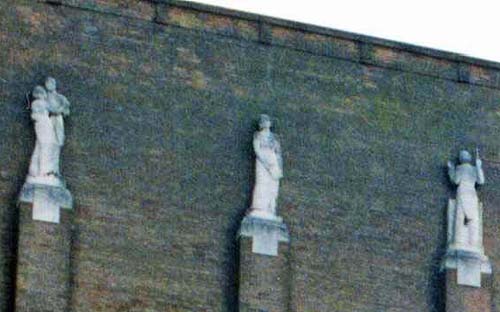 The
building remained empty for a number of
years and there were a number of
proposals to transform it into a hotel.
Eventually that was the solution to its
future and below you can see the
demolition of the interior.
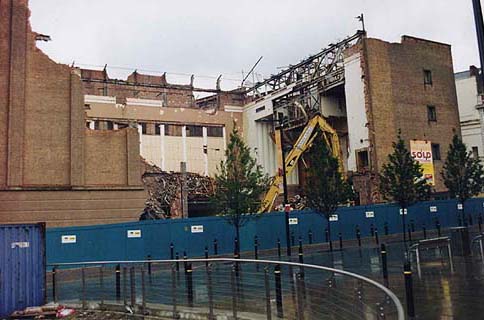 The
reconstruction preserved the Peter
Street front and part of the
Southmill Street facade, for which I
suppose we should be grateful. The
end result though gives the
appearance that a large and rather
undistinguished glass and concrete
modern hotel has crashed into the
back of an elegant 19th century
masterpiece.
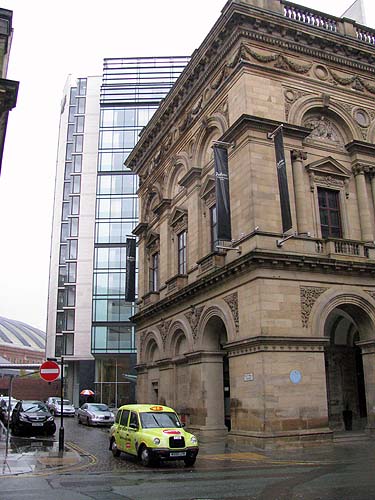  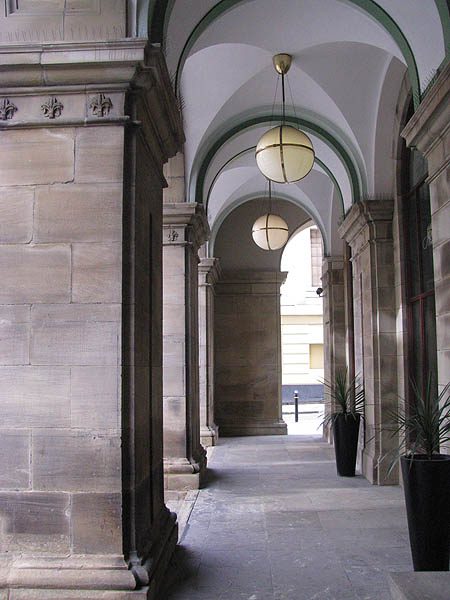 However,
it must be added that the Radison
Hotel has done an excellent job of
preserving some important features
of the old hall. The white
stone sculptures that graced the
Windmill Street side of the building
have been given pride of place in
the atrium lightwell and emphasized
by sympathetic lighting.
Ironically they are much more
accessible now than they were in
their original position.
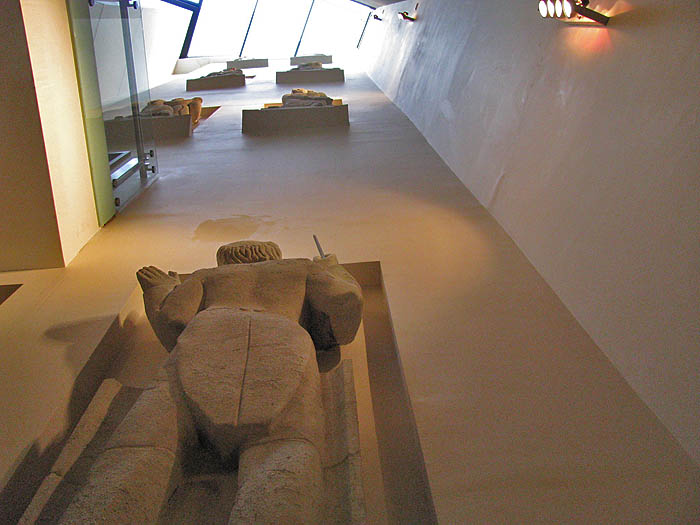 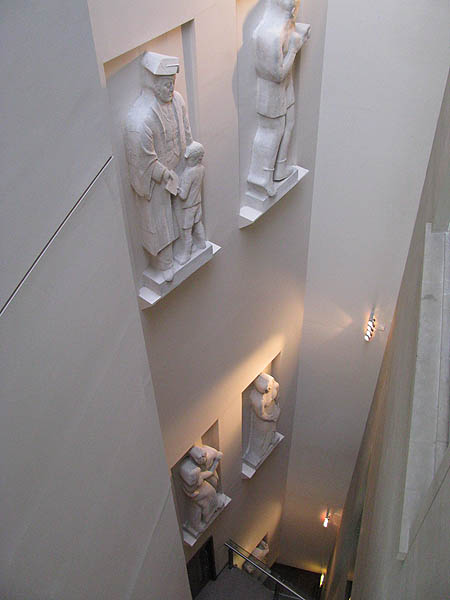 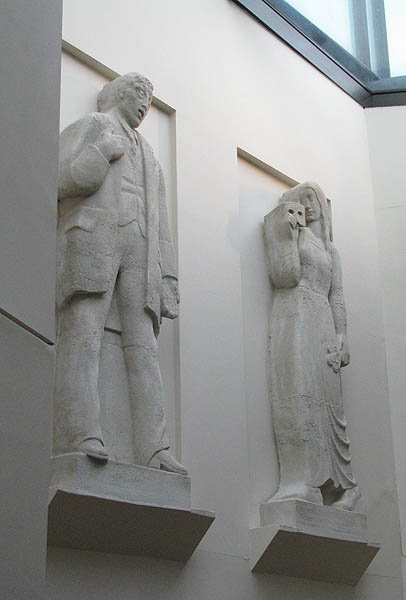 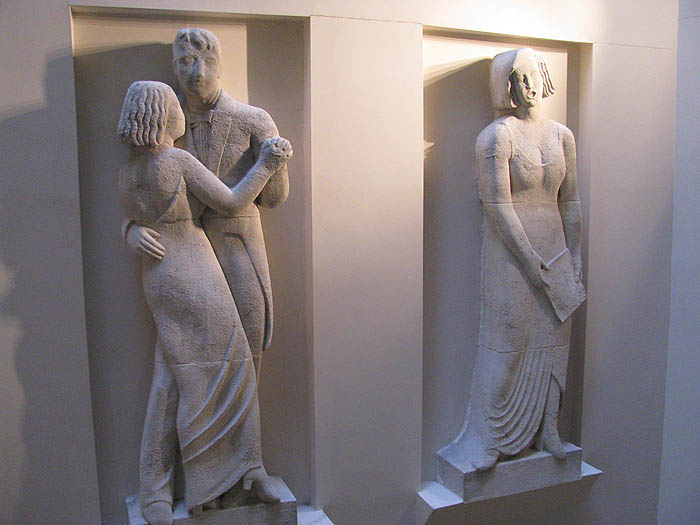 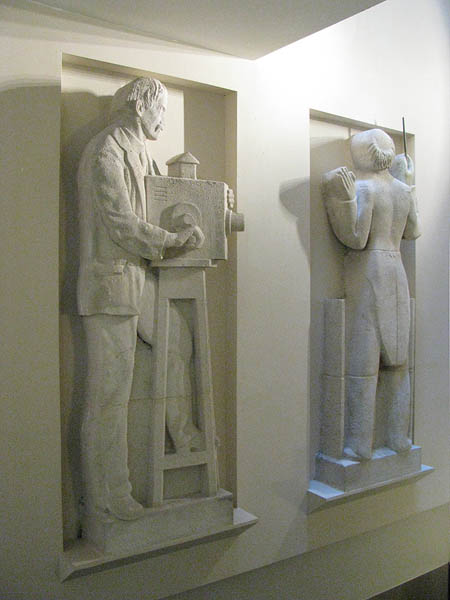 Inside
the Hall a number of crests were hung
along the side walls. These were
the coats of arms of city bodies and
neighbouring local authorities.
Today those crests are mounted above the
reception desk.
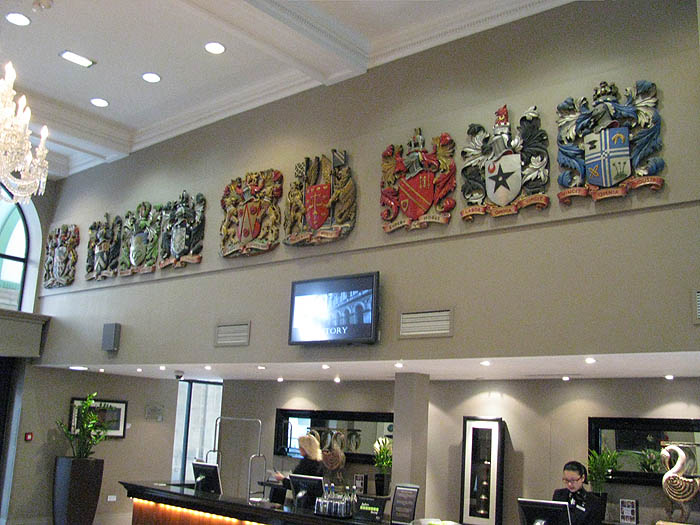 On Level
2 of the hotel you will find this crest
of the City of Manchester that once hung
over the entrance doorway to the
auditorium.
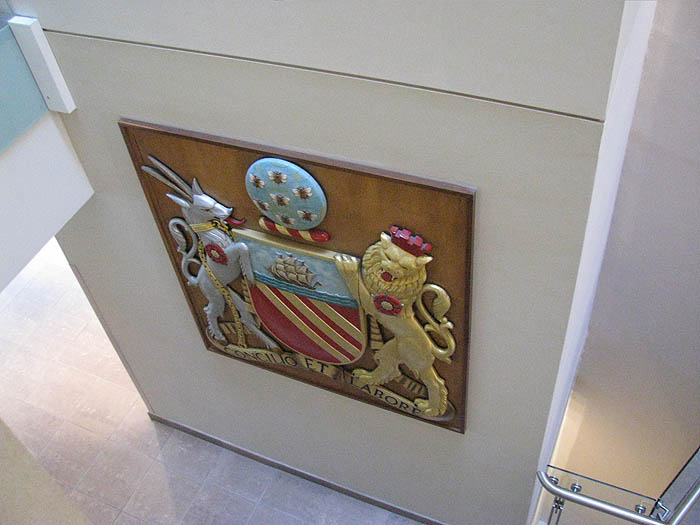 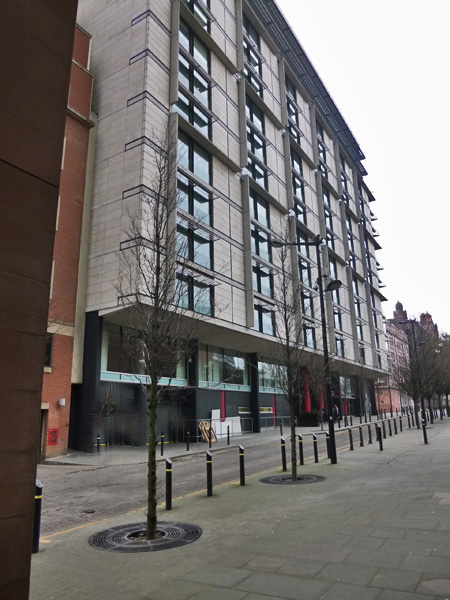 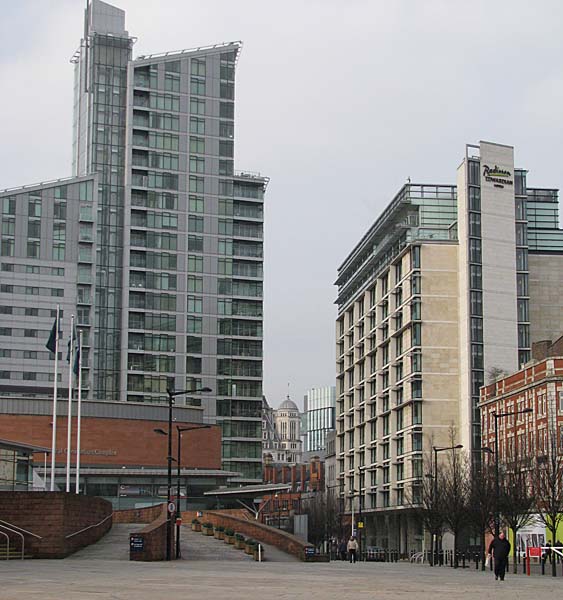 *************************** Across
the Peter Street front of the Free
Trade Hall there are a number of
sculptures. Below is a
selection of them. The plaques
have been rearranged to make it
easier to display them.
 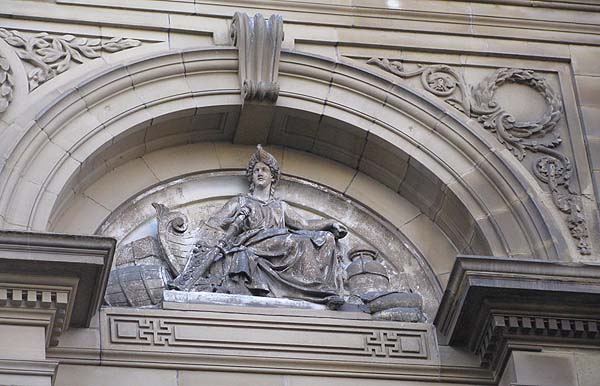 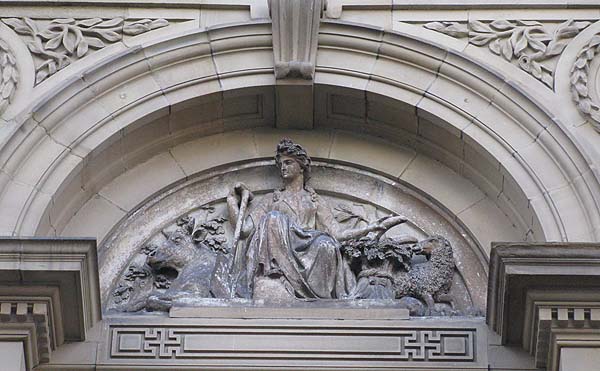 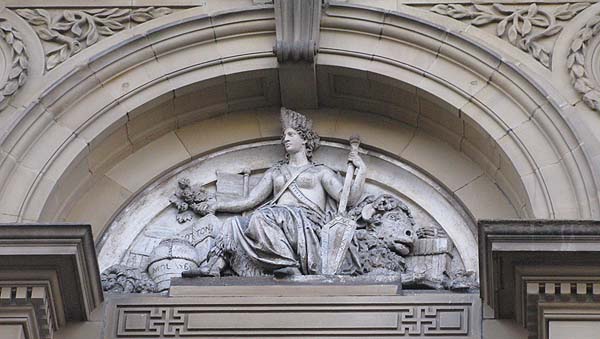 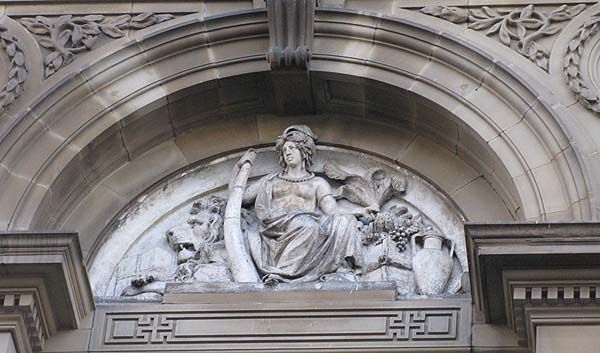 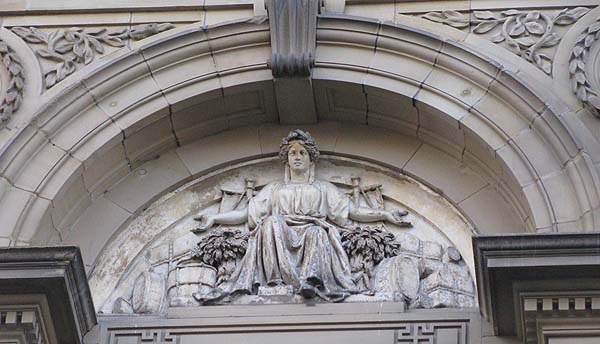 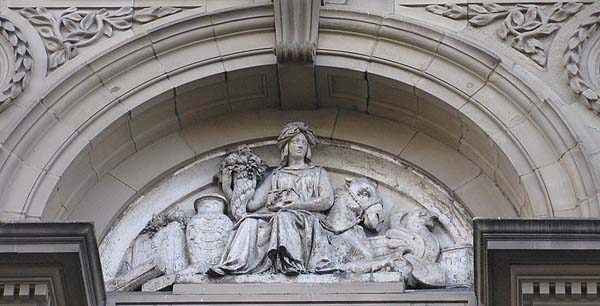 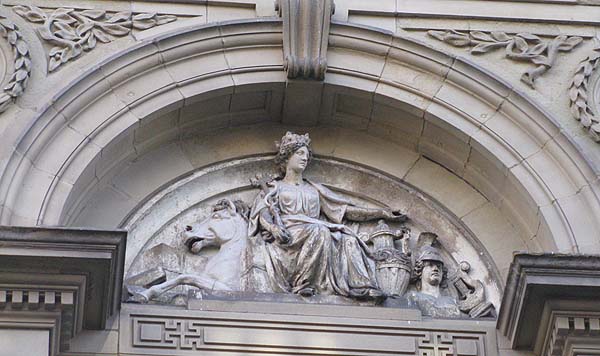 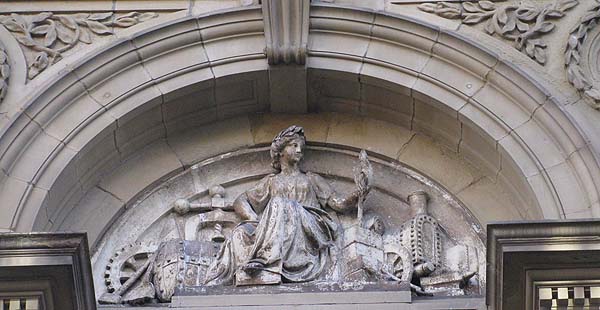 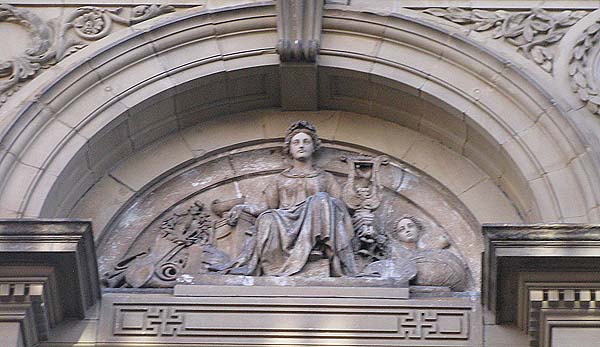 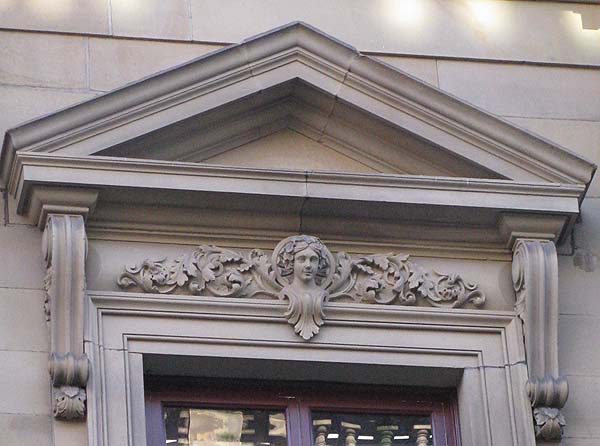 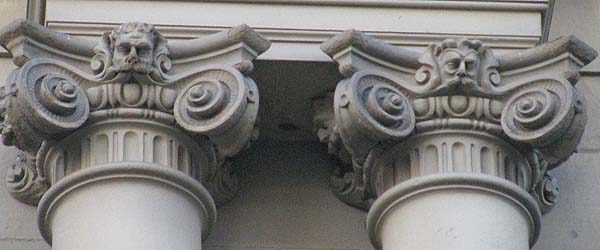 Close Window |